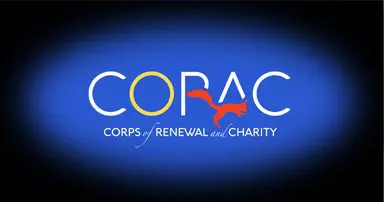LONG TERM FOOD STORAGE AND WHY YOU NEED TO START TODAY
Panedemic Prepsters, Ola Griffin
I help people navigate or start storing food for the long term. That is my daily job. Because of the pandemic, many people found that food was difficult to get in March, April and May 2020. I spoke to many people during that time who needed help getting started. I have had grown men cry on the phone saying they couldn’t get food for their families for weeks during the early part of the pandemic here in the United States. I cried with them and helped navicat the long term food storage, and many said they would never be caught without food for their families.
I helped navigate the ‘whys, the ’how-tos,’ and the ‘what-fors.’ But let me tell you that these were U.S. states like New York, New Jersey Connecticut and Florida, just to name a few. This was an eye opener for many people throughout the world. As stores were cleared out of products, the need to wait for the items to be restocked ensured some got items and some did not. Early on we all heard of the TP hoarders. The long lines and empty shelves as they were cleaned out within hours of opening. Most places limited the amount of each item people could take homeand there are still shortages of items almost a year later.
If you haven’t started storing food, please do not wait. No matter the size of yoou home there are ways to store food that will fit for your needs. I have one lady in Texas who lives in an RV. She is a backpacker and a prepster. Have a small apartment? There is room under your bed if you add risers to lift it and store there. There are places lsuch as your entry closet where you can add a bin or two of long term food storage. The upper part of the extra bedroom closet is another place.
The basic food for long term food storage includes rice, beans, oats, corn, wheat, flour, paste, salt, and sugar that you can store long term, and most can be stored for 20+ years.
A short term food storage is a 3 to 6 month pantry. It ia also a great way to expand your regular pantry to the next level. Keeping a 6 month supply of your regularly used itmes by simply keeping a pad of paper by your pantry and every single time you pull something out, write it down. After 2 weeks to a month, add them up and multiply to get a 3 month or 6 month pantry of extra items on hand, Purchase these items when they are on sale and rotate as needed.
Items include your canned goods: soups, pasta sauce, veggies, fruits, broths, chicken, tuna canned beans, tomato sauces and so forth. Your usual items such as mac n’ cheese, quick mashed potatoes, rice-a-roni and such should be added to expand your monthly or bi-monthly pantry to be a 3 or 6 month pantry.
Remember, the seasonings are important. Add chili seasoning packets or taco seasoning to ensure you can open canned beans and make a simple chili dinner for your family. Jars of peanut butter and crackers are great to keep on hand. Use your list to ensure you have those items that you and your family have come to rely on.
Thank you from our family to yours,
To download the inventory checklist, click on the link below:

























I had to chuckle reading the pdf on long term food storage. I don’t want my husband to be a “hoarder”, but he’s always buying stuff on sale. Reading the pdf was like a list of what we already have! 🙂
BTW, we have a grocery outlet and a “99 cent” store in our area. These are great resources for items that can be on our lists. Get things you see and like, because they will often not be there again. That’s how they do business, buying up “lots” of items that may be excess or?.
I can relate, Annie!
Just canned 16 pints of venison.
This is not counting the two meals, and liver in the freezer, and gallon of bone broth. All from just the front shoulders and bones, liver, heart, and tongue of a small “spike’ that was given to me. This is the throw-away parts from most hunters.
They don’t like it because it is “too hard” to get much good from these pieces. Well, here is what I do.
1. Cook the shoulders in plenty of liquid in a roaster. Add onions, lots of celery (takes out the gaminess). I use plenty of garlic powder, onion powder, and pepper, and apple cider ale or beer, at least one. 4-6 hours later, skim the fat and bits off the top and serve. The meat just falls off the bone, the “gristle” is not bad, and the fat disappears. Serve over rice, biscuits, noodles, or mashed potatoes. Wonderful, but still a bit chewy.
2. Then I boiled EVERYTHING except liver into the bone broth. Cut leg bones with meat in pieces, or at least in half. Put bones, scraps, etc., into a HUGE pot. Add a bit of vinegar. Boil until meat falls off bones. Take off fire. When cooled a little, strain, so you cool the meat. Keep pot with liquid. Take meat off of bones. Put bones back into broth. Now clean the meat – it is easy to separate into meat, silver skins, and tiny fat balls. All clean meat gets divided to be stew-type meat or ground. Meat is extrememly easy to grind once it is cooked and cooled. Fill clean jars with ground meat, chunks of meat, and or leftover shoulder meat with the gravy and veggies. I did cover the meat with strained bone broth, but it is not necessary. BTW, we also made sloppy joes with the ground meat. No hint of toughness left. Can 75 minutes at your pressure.
This is a LOT of meat from throwaway venison.
Nance, thanks for posting this! I just got my 21 qrt pressure canner and begin tomorrow to defrost and can all my frozen meat. I buy 1/2 beef every year and slowly go thru it with my husband. I am thrilled to be changing that over to canned meat supply. Every book or YouTube I look at tells me to avoid fats. ? Is that just left over fat fear from the era we are coming out of? Is there a real reason to not have fat in our storage/canned foods? I love fat. I need fat. Animal fat. I love bacon. I want to can bacon. I want to include fats in my canned meat jars. As far as that goes, does anyone preserve animal fats this way? tallow? Lard? Duck fat? etc. Is it canned too to preserve it?
thank you!!!
I would have to look up the prepper that I followed when canning beef but I kept the fat in because we will need the fat. We have opened one jar that I canned and it was delicious. So I am not sure why the sites you are on say no to fat… I will try find the site and post it.